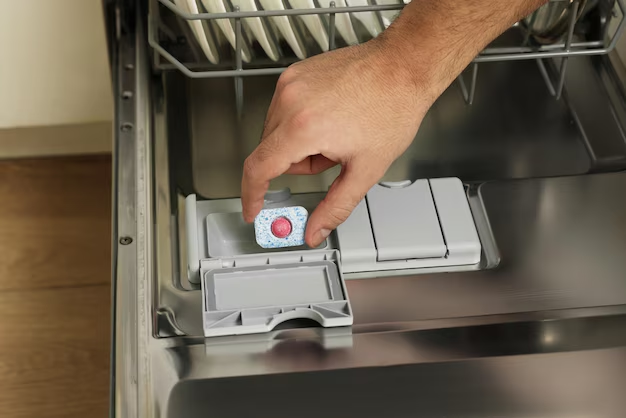How to Seamlessly Connect a Copper Water Line to Your Refrigerator
Imagine never having to fill up an ice tray again. Connecting a refrigerator to a water supply line is a DIY project that can transform your kitchen experience by providing continuous access to chilled water and ice. Yet, the process of linking a copper water line to your appliance might seem daunting at first glance. Worry not—this guide is crafted to walk you through each step, ensuring clarity and confidence along the way.
Understanding Copper Water Lines
Copper pipes have been a top choice for water supply lines due to their durability and reliability. Their longevity and resilience to corrosion make them suitable for household plumbing needs. While there are modern alternatives on the market, like flexible plastic tubing, copper is often celebrated for its strength and heat resistance.
Pros of Using Copper Pipes
- Durability and Strength: Copper lines can withstand high pressures and temperatures.
- Resistance to Bacteria: Minimizes bacteria growth compared to other materials.
- Long Lifespan: Offers longevity, reducing the need for frequent replacements.
Cons of Using Copper Pipes
- Cost: Higher initial expense compared to plastic options.
- Flexibility: Less flexibility could make installation slightly challenging in tight spots.
Gathering the Necessary Tools and Materials
Before diving into the installation process, it’s crucial to gather the right tools and materials. Proper preparation saves time and helps avoid unnecessary trips to the hardware store.
Essential Tools and Materials List
- Copper tubing: Typically 1/4-inch is recommended for refrigerator water lines.
- Pipe cutter: For clean and precise cuts.
- Compression fittings: Used to secure the tubing to the refrigerator and main water pipe.
- Adjustable wrench: Helpful for tightening fittings.
- Drill and drill bits: If holes are needed to route the tubing.
- Teflon tape: To ensure a leak-free seal on threaded connections.
- Measuring tape: For precise measurements.
- Bucket or pan: To catch any potential water spills.
Step-by-Step Guide to Installation
To make your installation process smooth and efficient, follow these clear steps.
Step 1: Turn Off the Water Supply
Before any pipework or cutting, ensure that the water supply to your home or at least to the refrigerator is completely shut off. This prevents unwanted leaks and ensures a dry working environment.
Step 2: Plan Your Route
Determine the shortest and most efficient path for the copper line from the water supply valve to the refrigerator. Consider existing cabinetry, walls, and other potential obstructions.
Step 3: Cut the Copper Tubing
Measure the required length of copper tubing accounting for bends and any obstacles. Use the pipe cutter to make clean, straight cuts. Pro Tip: Always cut a little longer than estimated; you can always shorten the pipe later.
Step 4: Install the Shut-Off Valve
A dedicated shut-off valve makes future maintenance or repairs easier. Attach this valve near the refrigerator with the use of Teflon tape to ensure a tight seal.
Step 5: Connect the Copper Tubing
First, attach a compression fitting to one end of the copper tubing. Slide the nut and the compression ring onto the tubing, then insert the end into the valve. Tighten the nut securely with an adjustable wrench. Repeat the process on the refrigerator end, ensuring all connections are snug.
Step 6: Secure the Tubing
Using clamps or ties, secure the copper tubing discreetly along its route. This prevents any movement and potential damage, securing it neatly against cabinetry or walls.
Step 7: Check for Leaks
Turn on the water supply and closely inspect all connections for any signs of leakage. If you spot any drips, gently tighten the connections further.
Troubleshooting Connection Issues
Despite the best preparations, minor issues might arise. Here’s how to troubleshoot common problems:
Leakage at Connections
- Recheck all fittings. If a leak persists, try readjusting or replacing the compression fittings.
Insufficient Water Flow
- Ensure the main water valve is entirely open.
- Examine the tubing for any kinks or bends obstructing flow.
Refrigerator Not Producing Ice
- Confirm the refrigerator's ice production settings are correctly adjusted.
- Check internal filters for any clogs that may obstruct water flow.
Enhancing Installation: Tips and Precautions
Mastering a copper pipe installation involves honed techniques and an awareness of common pitfalls.
Key Tips for Effective Installation
- Double-Check Connections: Hand-tighten nuts before using a wrench to avoid over-tightening, which could lead to cracks.
- Avoid Sharp Bends: Gentle curves in the tubing prevent stress and damage.
- Routine Checks: Regularly inspect the water line for signs of wear or corrosion.
Common Precautions
- Handle with Care: Copper is strong but avoid unnecessary force which may risk the integrity of the tubings.
- Be Mindful of Electricity: Ensure the refrigerator is unplugged during installation to avoid mishaps.
Summary of Essential Steps 📝
Here's a concise recap of the essential steps involved in connecting a copper water line to your refrigerator:
- 🔧 Gather Tools: Ensure you have all necessary tools and materials.
- 🚰 Shut-Off Water: Prevent accidental spills by turning off the main supply.
- ✂️ Cut & Measure: Precisely cut the copper tubing to fit the determined route.
- 🔩 Install Fittings: Secure both ends with compression fittings.
- 🔗 Secure & Check: Affix tubing with clamps and test for leaks.
By adhering to these guidelines and incorporating best practices, you can achieve a hassle-free and durable connection, enhancing your refrigerator's functionality and your overall kitchen convenience. With patience and precision, you can be confident in tackling this DIY project, enjoying the perks of an automated water and ice supply.
